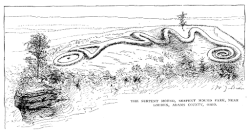
The archaeology of the Americas is the study of the archaeology of the Western Hemisphere, including North America (Mesoamerica), Central America, South America and the Caribbean. This includes the study of pre-historic/Pre-Columbian and historic indigenous American peoples, as well as historical archaeology of more recent eras, including the Trans-Atlantic slave trade and European colonization.
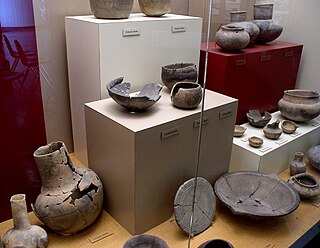
Processual archaeology is a form of archaeological theory. It had its beginnings in 1958 with the work of Gordon Willey and Philip Phillips, Method and Theory in American Archaeology, in which the pair stated that "American archaeology is anthropology, or it is nothing", a rephrasing of Frederic William Maitland's comment: "My own belief is that by and by, anthropology will have the choice between being history, and being nothing." The idea implied that the goals of archaeology were the goals of anthropology, which were to answer questions about humans and human culture. This was meant to be a critique of the former period in archaeology, the cultural-history phase in which archaeologists thought that information artifacts contained about past culture would be lost once the items became included in the archaeological record. Willey and Phillips believed all that could be done was to catalogue, describe, and create timelines based on the artifacts.
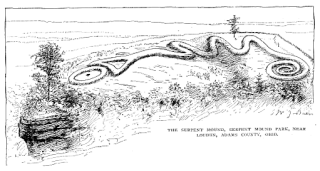
In the classification of the archaeological cultures of North America, the Archaic period in North America, taken to last from around 8000 to 1000 BC in the sequence of North American pre-Columbian cultural stages, is a period defined by the archaic stage of cultural development. The Archaic stage is characterized by subsistence economies supported through the exploitation of nuts, seeds, and shellfish. As its ending is defined by the adoption of sedentary farming, this date can vary significantly across the Americas.

Oneota is a designation archaeologists use to refer to a cultural complex that existed in the Eastern Plains and Great Lakes area of what is now occupied by the United States from around AD 900 to around 1650 or 1700. Based on the classification defined in Gordon Willey and Philip Phillips' 1958 book Method and Theory in American Archaeology, the Oneota culture belongs to formative stage. The culture is believed to have transitioned into various Siouan cultures of the protohistoric and historic times, such as the Ioway. A long-accepted ancestry to the Ho-chunk has yet to be conclusively demonstrated.

In the sequence of cultural stages first proposed for the archaeology of the Americas by Gordon Willey and Philip Phillips in 1958, the Lithic stage was the earliest period of human occupation in the Americas, as post-glacial hunter gatherers spread through the Americas. The stage derived its name from the first appearance of Lithic flaked stone tools. The term Paleo-Indian is an alternative, generally indicating much the same period.
In archaeology, the general meaning of horizon is a distinctive type of sediment, artefact, style, or other cultural trait that is found across a large geographical area from a limited time period. The term derives from similar ones in geology, horizon or marker horizon, but where these have natural causes, archaeological horizons are caused by humans. Most typically, there is a change in the type of pottery found and in the style of less frequent major artefacts. Across a horizon, the same type of artefact or style is found very widely over a large area, and it can be assumed that these traces are approximately contemporary.
Gordon Randolph Willey was an American archaeologist who was described by colleagues as the "dean" of New World archaeology. Willey performed fieldwork at excavations in South America, Central America and the Southeastern United States; and pioneered the development and methodology for settlement patterns theories. He worked as an anthropologist for the Smithsonian Institution and as a professor at Harvard University.
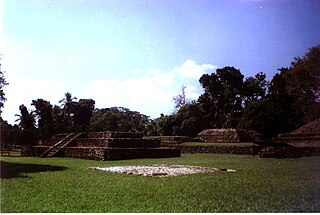
Izapa is a very large pre-Columbian archaeological site located in the Mexican state of Chiapas; it is best known for its occupation during the Late Formative period. The site is situated on the Izapa River, a tributary of the Suchiate River, near the base of the volcano Tacaná, the sixth tallest mountain in Mexico.

Robert John Braidwood was an American archaeologist and anthropologist, one of the founders of scientific archaeology, and a leader in the field of Near Eastern Prehistory.
Several periodisations are employed for the periodisation of the Indus Valley Civilisation. While the Indus Valley Civilisation was divided into Early, Mature, and Late Harappan by archaeologists like Mortimer Wheeler, newer periodisations include the Neolithic early farming settlements, and use a stage–phase model, often combining terminology from various systems.

Several chronologies in the archaeology of the Americas include a Formative Period or Formative stage etc. It is often sub-divided, for example into "Early", "Middle" and "Late" stages.

In the classification of the archaeology of the Americas, the Post-Classic stage is a term applied to some pre-Columbian cultures, typically ending with local contact with Europeans. This stage is the fifth of five archaeological stages posited by Gordon Willey and Philip Phillips' 1958 book Method and Theory in American Archaeology.
- The Lithic stage
- The Archaic stage
- The Formative stage
- The Classic stage
- The Post-Classic stage
Philip Phillips was an influential archaeologist in the United States during the 20th century. Although his first graduate work was in architecture, he later received a doctorate from Harvard University under advisor Alfred Marston Tozzer. His first archaeological experiences were on Iroquois sites, but he specialized in the Mississippian culture, especially its Lower Mississippi Valley incarnation.

Los Guachimontones is the largest Late Formative to Classic period pre-Columbian archaeological site in the state of Jalisco. Situated in the hills above the town of Teuchitlán that provides the namesake for the culture that built the site, Los Guachimontones is part of the Agave Landscape and Ancient Industrial Facilities of Tequila UNESCO world heritage site and a major tourist attraction within the Tequila Valleys.
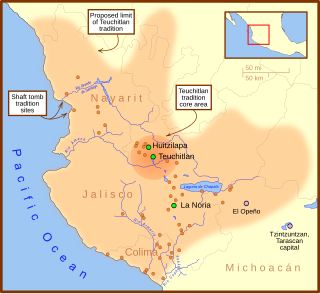
The Teuchitlán culture was one of several related cultures in West Mexico during the Late Formative to Classic period. Situated in the Tequila Valleys of Jalisco, the Teuchitlán culture shared in the tradition of burying some of their dead in shaft and chamber tombs. Archaeological work from the past few decades have demonstrated that West Mexico was not occupied by one homogeneous culture, historically referred to as the shaft tomb tradition, that stretched from Nayarit, Jalisco, and Colima. Instead, West Mexico was composed of multiple cultures with several distinct commonalities.
Prehistoric technology is technology that predates recorded history. History is the study of the past using written records. Anything prior to the first written accounts of history is prehistoric, including earlier technologies. About 2.5 million years before writing was developed, technology began with the earliest hominids who used stone tools, which they first used to hunt food, and later to cook.
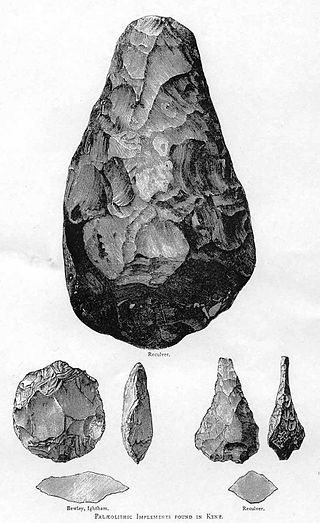
The following outline is provided as an overview of and topical guide to prehistoric technology.

Several chronologies in the archaeology of the Americas include an Archaic Period or Archaic stage etc. It is often sub-divided, for example into "Early", "Middle" and "Late", or alternatively "Lower" and "Upper", stages. The dates, and the characteristics of the period called "Archaic" vary between different parts of the Americas. Sometimes also referred to as the "Pre-Ceramic stage" or period, it followed the Lithic stage and was superseded by the Formative stage, or a Preformative stage. The typical broad use of the terms is as follows:
